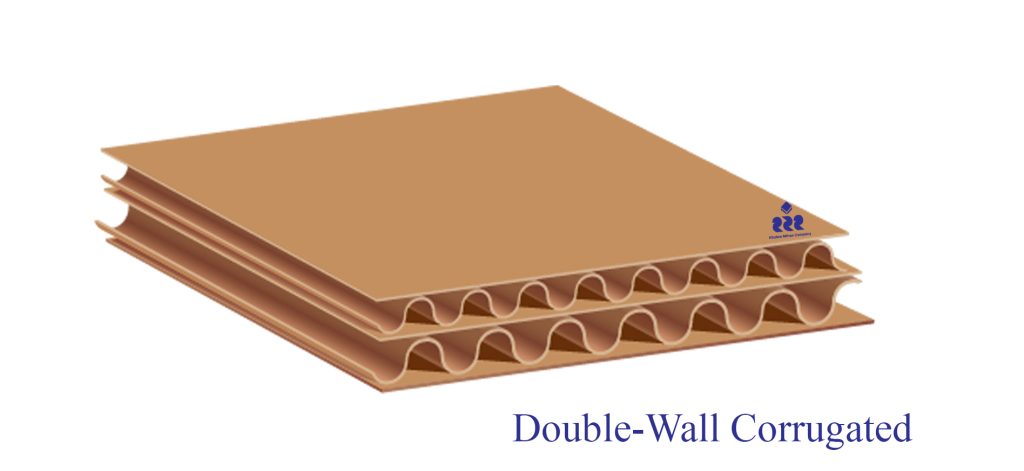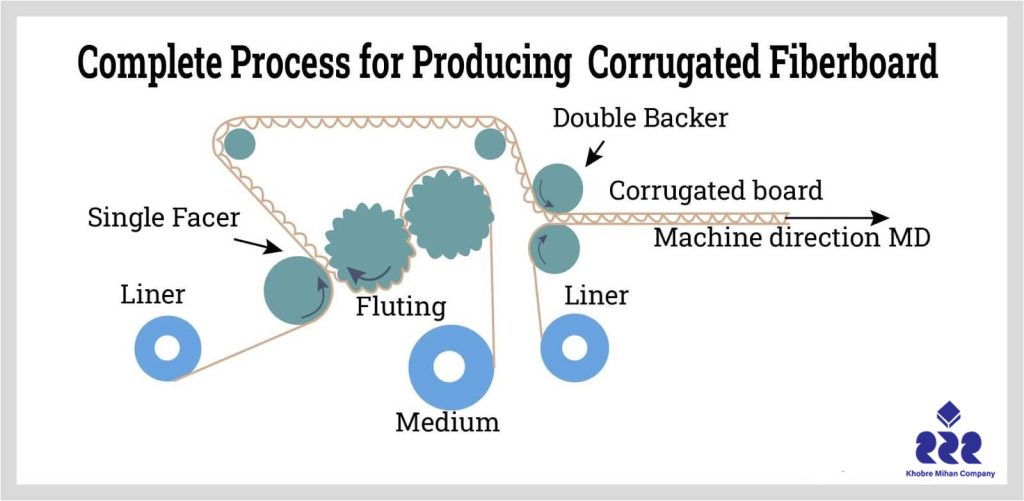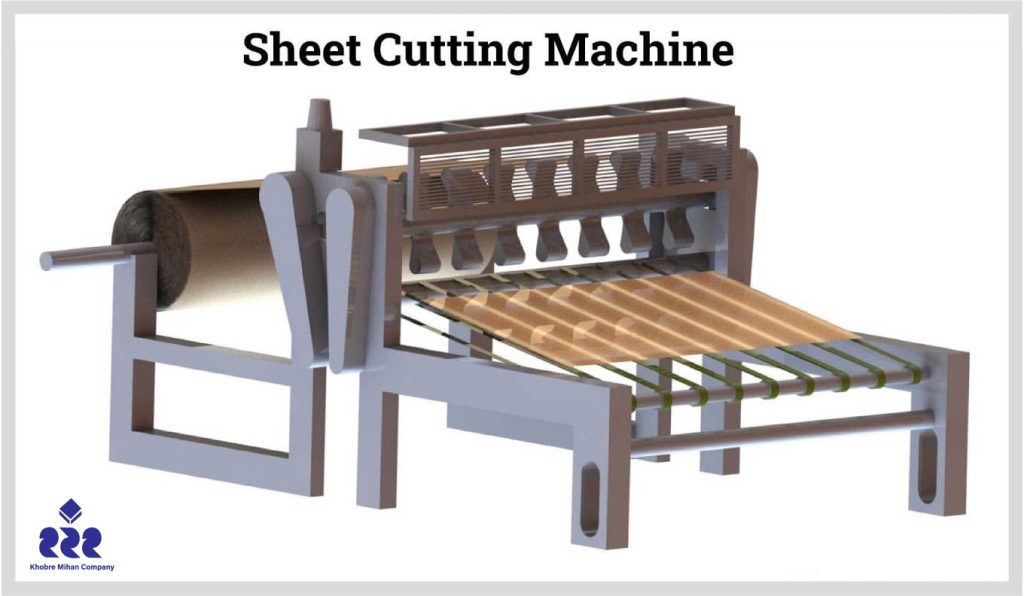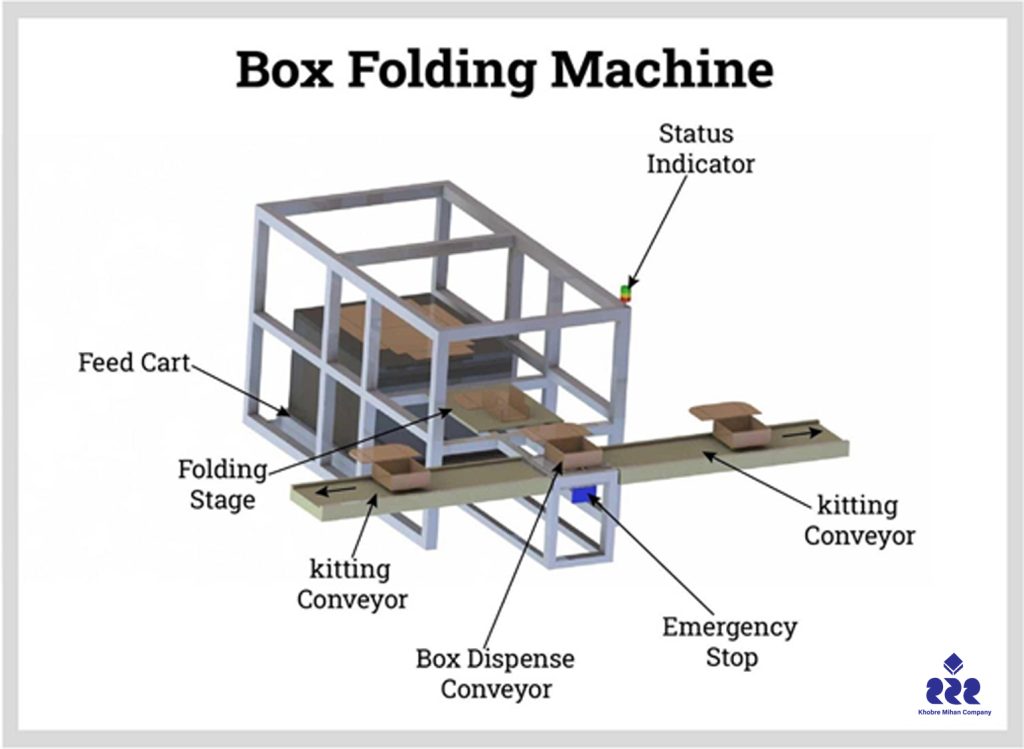What is a Corrugated Box
- Khobre Mihan co
- Article
- What is a Corrugated Box
A corrugated box is a single-use container with layers of material, including an inner layer, outer layer, and fluted middle layer that provides support and cushioning for heavy items. The conventional cardboard box has been around for over 200 years, and during the first industrial revolution, flutes became a standard part of the corrugation process. Since then, corrugated boxes have become the most commonly used shipping containers across various transportation and material handling sectors.
The Production of Corrugated Boxes
Prior to commencing the production of corrugated boxes, it is crucial to take into account a range of factors. Similar to other manufacturing or shipping equipment, corrugated boxes undergo a meticulous evaluation of various elements, such as their composition, flute dimensions, burst resistance, edge crush resistance, flat crush resistance, paper density, cardboard sheet mass, and diverse surface treatments. The manufacturing process initiates with a comprehensive analysis of these different components to determine the box’s capacity and durability.
Construction of Corrugated Boxes
A corrugated box can possess one of three types of walls: single, double, or triple.
Single Wall
The most basic form of corrugated box is the single-wall type, consisting of only two layers—a surface layer on the outside and an inner layer with corrugated material in between.

Double Wall
An additional layer of corrugated material is incorporated into the double-wall construction of corrugated boxes meant to hold heavier and larger objects.

Triple Wall
Triple-wall corrugated boxes are equipped with three layers of corrugated material, each incorporating different flute sizes to improve stability. The supplementary layers are specifically designed to optimize both cushioning and compression strength.

Corrugated boxes typically utilize standard flutes, namely A, B, C, E, and F. These flutes offer the flexibility to be combined, creating custom corrugated boxes with distinctive characteristics. Alternatively, they can be employed individually in their standard configurations.
Flute A is the classic type with 36 flutes per foot, suitable for thick padding and double wall applications.
Flute B, with 49 flutes per foot, excels in crush and stack resistance.
Flute C, the most widely used, features 41 flutes per foot, ideal for printing, cushioning, and stacking.
Flute E, the second most common, is eco-friendly with 90 flutes per foot.
Flute F is also environmentally friendly, with 128 flutes per foot and smaller, tighter flutes.

In addition to the commonly used corrugated flute styles, there are distinctive flutes that blend or fall between the standard flutes, like the D flute. Less conventional flutes include EE, EF, and BC, which are part of double-wall flute profiles. Rarely used flutes such as N and O are extremely small, measuring less than half a millimeter. These flutes are typically employed in corrugated boxes with specific requirements, such as greater stacking strength, improved cushioning, or enhanced visual appeal. Correlator engineers often utilize these specialty flutes to create corrugated boxes that are specifically tailored to the demands of the product being packaged. By carefully selecting the appropriate flute type, corrugator engineers can ensure that corrugated boxes provide the necessary protection and durability for a wide range of products.
Making Corrugated Board
The machine responsible for manufacturing corrugated cardboard used in corrugated boxes is known as a corrugator. The essential components of corrugated cardboard include liners, which constitute the flat facing of the cardboard and are produced from various paper grades, typically sourced from the elongated fibers of softwood trees. The fluted segment is created from shorter fibers found in hardwood trees. To form the fluted shape, extensive rolls of paper are united in a single facer. The paper undergoes steam heating to a temperature of 338 °F (170°C) to shape the flutes. Subsequently, the fluted paper is adhered to a single sheet of the liner by applying adhesive at a controlled temperature to the peaks of the flutes and flattening it with hydraulic rollers, resulting in the formation of the single-faced web.

After departing the single facer, the single-faced web progresses to the double glue unit and double backer, where it undergoes the transformation into double-walled corrugated paper. Two single-faced webs, together with the liner, are fed into the unit, and adhesive is applied to the exposed flute tips to join the outer liner. Throughout this phase, the liner and fluted single-faced web undergo consistent heating at carefully controlled temperatures to solidify the adhesive and ensure a robust bond. Once the double backer process is complete, the corrugated cardboard undergoes a drying phase to eliminate excess moisture and set the glue. Subsequently, the dried corrugated cardboard is scored and cut to the specified lengths, achieving the desired dimensions for the intended corrugated box.

Various lengths of board for the corrugated box are assembled and fed into the printing and box-making equipment. Each box undergoes a printing process where custom logos, designs, and a wide array of colors are applied to align with the brand and product specifications.
Packing Out Corrugated Boxes
Following the proper shaping and cutting of the corrugated boxes, they advance to the folding machine. This machine bends the box along the score lines and applies glue to the necessary areas for joining, completing the box formation. The accuracy and efficiency of the folding machine play a crucial role in shaping the box into its final form, guaranteeing structural integrity and readiness for its intended purpose.

The provided diagram depicts the complete process, from cutting the corrugated board to printing, slotting, and shaping the box. Initially, the corrugated board is cut into specific lengths to achieve the desired size for the corrugated box. Subsequently, the board is fed into the printing machine to incorporate a custom design, logo, or product information.
After the printing process, the printed corrugated board undergoes the slotting phase, facilitated by a slotting machine. This machine creates the necessary holes and slots for the box’s flaps and handles. Once the slotting is completed, the board progresses to the folding machine. Here, it is adeptly bent and folded along the score lines to craft the structural form of the corrugated box.
Conclusively, the corrugated box undergoes a quality control check to verify that it meets all the necessary standards for strength, durability, and aesthetic appeal. Once this check is completed, the finished corrugated box is ready to be shipped to customers, effectively safeguarding their products during transportation and storage.

We help our customers stand out in the market by providing superior packaging solutions
To achieve this goal, we continuously invest in developing our relationships with our customers so that we can meet the needs of our customers today and tomorrow. The consulting and design team of Mehen’s expert engineers, after hearing the demands of the customers, examined the different ways of packaging the product and then using the valuable experiences of the past and the current knowledge of packaging and the use of new technologies, the most optimal type of packaging examined. provides to consumers. For more information and consultation with us, click on the free consultation button.

